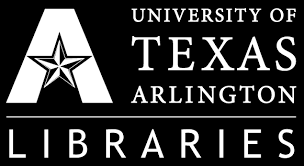jstor backpack

Click to Show/Hide Side Bar You are not currently logged in. Login through your institution for access. Log in through your institution. Aaaaw to Zzzzzd: The Words of Birds: North America, Britain, and Northern Europe Published by: MIT Press Search for reviews of this book Export a RIS file Export a Text fileFind out how it works with JSTOR Select / Unselect all Let’s start at home. I’m in my Shropshire garden, an untidy patch whose lower slopes were last seen pitching into woods somewhere toward the River Severn. The rain stopped a little while ago, and the air’s full of that sweet smell of wet foliage, the hazy patter of water droplets shaking through the hedges, warm moist air lifting off uncut grass. There’s a blue tit on bug patrol, picking over the green pigment of lichen on the dark side of a holly tree. An agitation in the clematis overwhelming the back wall emerges as that little familiar bundle of nerves,... Years ago I attended a weekend course in birdwatching at Dartington College, Devon, in the English west country.

It was just for fun, really, not something I needed to do, because of course I already knew how to birdwatch. I’d done it in parks and gardens in London—disused cemeteries too—on Surrey heaths and downland, in Norfolk wetlands, Welsh estuaries, Scottish moorland. And this is what I’d learned. When you’re out birdwatching, you stop walking and start prowling.
laptop backpack - citi pro 8You become a private eye on the case, lurking in the shadows, knowing that any noise or abrupt movement might give...
laptop backpack brinch(tm) It was all so simple when I went birdwatching at Dartington, with the inestimable Colin as a guide, to locate birds by their calls and pick out one species from another.
targus motor backpack for 16 inch laptop
I’m sure I was not the only one to finish the weekend feeling flattered that I was becoming quite the expert. But back on home turf it was a different story. My back garden rang with such a chorus of song as to put any fledgling bird listener in a tizz, or else with the paucity of a few abbreviated squawks and chirps that were impossible to identify.
ouija board backpack hot topic It’s a bright warm day in May and we’re twenty miles north of Autun, Burgundy, walking through the Suze valley.
sazabi backpackThe land falls away on our right down to the river, or stream as it is this high in its course.
jansport backpack tj maxxBroad grazing land, pasture for sheep and Charolais cattle, small coppices and occasional wiry trees at the boundaries of the fields.
55l backpack malaysia
Behind the hedge someone is whistling for his dog. Whistling rather well, actually. Never mind being a shepherd, he should go on stage. No sign of the dog, nor of the whistler come to that. What follows is an attempt to compile the most plausible notations for the most distinctive calls of the most commonly heard birds of North America, Britain, and northern Europe.That geographical coverage relates to the distribution of this book more than the distribution of birds. In fact, looking through distribution charts it strikes me that the short-eared owl is possibly the only species (other than booksellers) to breed exclusively where this book is sold. For the rest, the charts show no two species occupying precisely the same territories for residing, breeding, wintering, and visiting on passage.The overall picture then... Mnemonics for bird sounds are listed separately, as they are formulated in a different way. The “bird words” of the main lexicon attempt true phonetic equivalents of the sounds birds make, whereas mnemonics catch the rhythm and emphasis of the song in words and phrases from the English language, regardless of the failure of vowel or, especially, consonant sounds to equate.

One particular mnemonic takes this detachment one stage further: rather than supply the rhythm of the song, the phrase for the chaffinch describes an event whose own rhythm suggests the song.This selection is not intended to be, and... The verbal or phonetic notation of birdsong has a particular niche in bird literature, but of course it is only one method among many of collecting sound. As a context for the viability of “bird words,” it seems useful to consider some of the alternative means, aural and graphic, by which humans reproduce, represent, recreate, document, and utilize bird sound.Contemporary field guides to birdsong are commonly audio books accompanied by CDs of birds performing in the wild. Their great advantages over verbal notation are veracity and lack of ambiguity; their disadvantages that they record the particular rather than the... Evolutionary Perspectives on Pregnancy Published by: Columbia University Press Successful reproduction is the name of the evolutionary game for all organisms, but in species that have evolved pregnancy-like phenomena, parents often go to extraordinary lengths in promoting the survival of their young.

Pregnancy as a biological syndrome presents several enigmas. The phenomenon is simultaneously the epitome of both self-sacrifice and selfishness because a parent jeopardizes its own health by nurturing embryos inside its body, yet its ulterior evolutionary motive is to cultivate its own personal genetic contribution to succeeding generations. Another paradox is that pregnancy symbolizes safety and danger alike because internal gestation connotes the essence of warmth and... This chapter introduces “live-bearing” vertebrates as ambassadors of pregnancy and as exemplars of diverse evolutionary topics that the pregnancy syndrome motivates. In other words, it describes vertebrate creatures in which progeny are borne internally by their mothers before being delivered as free-living beings to the outside world. This overview should prepare readers for later chapters that focus on other manifestations of pregnancy-like phenomena in both vertebrates and invertebrates.Viviparity(from “vivi,” meaning “alive,” and “parity,” meaning “borne”) refers to the gestation and subsequent delivery of offspring from within the body of a biological parent.

Viviparous species, including Homo sapiens and most... This chapter introduces vertebrate animals that practice egg laying (oviparity) rather than live birthing (viviparity) and emphasizes that the distinction between these two seemingly distinct methods of procreation can often be somewhat artificial or arbitrary. Although oviparous vertebrates seldom meet the stereotypical criteria for pregnancy, oviparous females do bear their young internally (albeit encased in eggshells) before parturition, and their offspring are of course alive inside the eggs at the time they exit the dam’s body. So, technically, even oviparous species could be deemed live-bearers. Thus, depending on how one defines pregnancy, oviparous vertebrates display reproductive modes that can be... Although many invertebrate organisms manifest one or another version of viviparity, it is customary to refer to these species as internally producing their offspring rather than as giving birth by standard means of pregnancy.

This chapter discusses the diverse expressions of internal (and external) brooding by invertebrate animals. Furthermore, among the external brooders are invertebrate species that retain embryos at one place or another on their bodies, plus other species that encase their embryos in special off-body capsules.Figure 4.1 introduces some of the rationales for including all of these categories of endogenous and exogenous brooding in a book on pregnancy. Each human pregnancy technically begins when a sperm cell and an ovum unite inside a woman and produce a fertilized egg or zygote, whose nucleus contains 2 nearly matched sets of genetic material, one from the father and the other from the mother. This never-before-seen mixture of genes interacts to help direct the progeny’s biological life—from preembryo to the person’s death perhaps decades later. However, in the first 2–4 rounds of cell division, most of the RNA and protein molecules that orchestrate ontogeny are maternal holdovers that the mother produced and deposited into the egg’s cytoplasm.

Pregnancy unleashes powerful forms of natural selection during the gestational phase of the mammalian life cycle. From the outset, however, I want to emphasize that not all expressions of mammalian pregnancy necessarily register adaptations shaped by natural selection. Thus there is no need to invoke adaptive justifications for all empirical facets of mammalian pregnancies. Indeed, chapter 5 noted that human pregnancy is often maladaptive (even lethal) to the participants. Here we take a broader evolutionary look at how natural selection both shapes and can be directed by mammalian-style viviparity. I first discuss natural selection’s likely influence (or sometimes lack thereof)... Sexual selection arises from the differential ability of individuals to obtain sexual partners and fertilize gametes. It is the “other form” of selection explicated by Darwin (1871). Unlike natural selection (Darwin 1859), which tends to forge adaptations in response to environmental demands, sexual selection tends to mold behaviors and other phenotypes to meet mating demands.

As Darwin recognized, sexual selection is tightly interwoven with many other reproductive topics, including mating behaviors, mating systems, sex ratios, and sexual dimorphism. Even a century and a half after Darwin (Avise and Ayala 2009), modern extensions of sexual-selection theory continue to present empirical and... We learned in chapters 1 and 7 that anisogamy (the larger size and lower motility of female gametes) initiated an evolutionary cascade of gender biases with respect to potential fertilities, variances in reproductive success, intensities of mate competition, the nature and direction of sexual selection, the elaboration of secondary sexual traits, magnitudes of parental investment in progeny, proclivities for pregnancy and brooding, and assurances of biological parentage for particular offspring. We also learned that female pregnancy in viviparous taxa then often amplifies these sexual biases by further curbing female fecundity and making each female even more limiting as a reproductive...